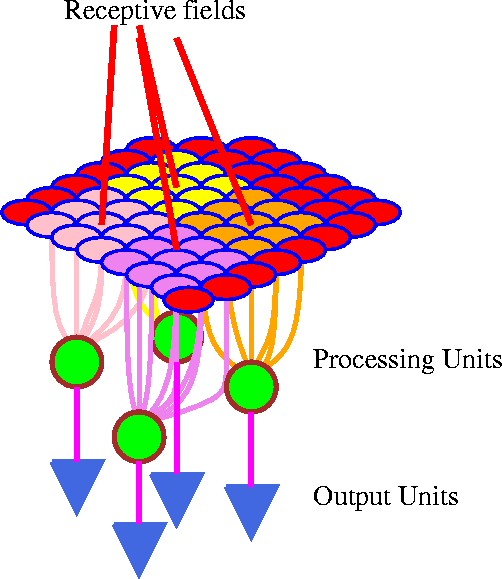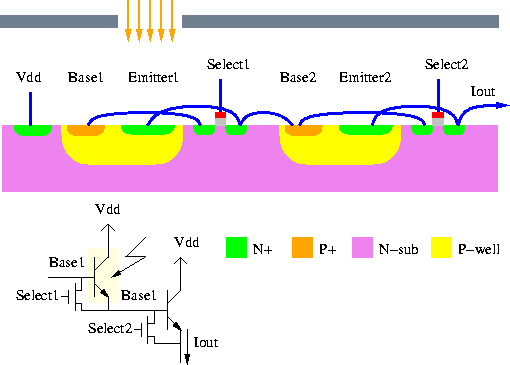
In [Ward and Syrzycki 95, Ward and Syrzycki 93, Ward et al. 93] Ward & Syrzycki describe vision sensors based on the receptive field concept. Receptive fields are regions over which several neighboring photoreceptors provide input to processing units. Therefore, a receptive field consists of several photodetectors, a processing unit, and an output unit. There may or may not be overlap between contiguous receptive fields. A sensor with non-overlapping receptive fields is shown in Figure 2.22. In this figure each nine receptors constitute a receptive field.
Based on this concept a Sobel edge detector has been implemented in a chip, where the operators in x and y direction are given by

The weighting required for the Sobel operators is done using current mirrors. In the implemented chip each edge operator collects input from its eight nearest neighbors.
The reference [Ward and Syrzycki 93] also provides information on a multi-sensitivity photodetector. This detector is a parasitic vertical bipolar between diffusion, well, and substrate. By connecting a MOS transistor to base and emitter of the bipolar transistor the gain of the photodetector can be changed. By using another bipolar transistor in a darlington structure the current gain can be boosted once more. However, the dynamics of such a structure significantly degrades at low light levels. The main advantage of using this structure is that the output current can be limited to a range of a few decades, by activating both bipolar transistors at very low light intensities and inactivating both transistor at higher intensities. The cross section of this structure is shown in Figure 2.23.

Figure 2.22: Non-overlapping receptive fields.

Figure 2.23: Ward-Syrzycki's multisensitivity photodetector.